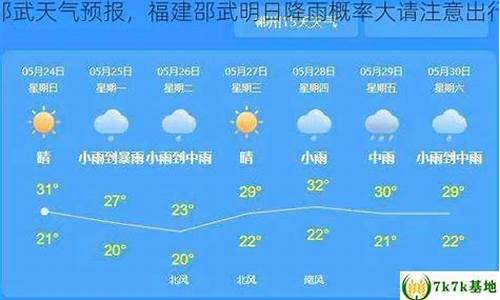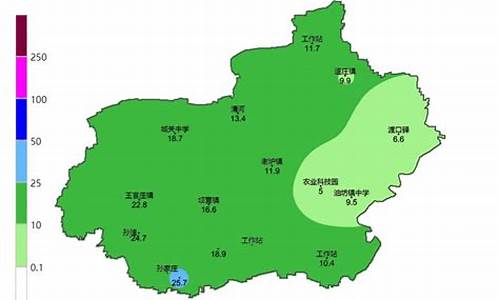今天的天气预报到此结束的英语_今天的天气预报到此结束再见用英语怎么说
1.英语天气预报
2.英语的天气预报
3.天气预报用英语怎么说
4.英语作文 天气预报 最近就行

台词:
观众朋友大家好,欢迎收看天气预报。湖州明天多云转阴有阵雨或雷雨,请市民外出记得带上雨具,免得淋湿伤了身体。
明天温度20~2°C ,温差较大,请市民朋友在早晨和晚间多加衣服,注意温度的变化,明天风力小于3级,森林禁止野外用火。最后,祝大家生活愉快,今天的天气预报到此结束,明天再见。
新闻联播天气预报:
1980年7月7日,电视节目《新闻联播天气预报》诞生。由于紧跟着中国中央电视台《新闻联播》节目播出,因此被称为“新闻联播天气预报”。
《天气预报》节目领航式地开启了公共气象服务的先河。
英语天气预报
咱们一起看一下今天天气预报英语
Let's look at today's weather forecast.
或者
Let's look at the weather forecast today.
这两种说法都可以
英语的天气预报
Good morning ! It's 7 o'clock. Here’s the weather report for some big cities in China.It is cloudy in Beijing,the highest temperature is 35 centidegrees and the lowest 25 centidegrees.In the northeast of China,Harbin, it is going to be rainy all day.Be sure to go out with your umbrellas.In Hong Kong there’s a beautiful sunshine.If you plan to trel there,the temperature is mild.The highest is 27 and the lowest 19 centidegrees.
That’s the weather report for today . Thank you for listening
早上好!现在7点钟。下面是一些中国大城市的天气报告。北京多云,最高温度为35摄氏度,最低25摄氏度.中国东北的哈尔滨,全天有雨.外出请带好您的雨伞.香港有美丽的阳光.如果您去那里,气温很柔和。温度最高为27 ,最低19摄氏度。
这是今天的天气报告。谢谢您的收听
天气预报用英语怎么说
Dry and sunny in Scotland. Rain or showers elsewhere.
Today:
Much of Scotland dry with further sunshine, but rather breezy. Outbreaks of rain or showers, some hey, will affect parts of England, Wales and Northern Ireland, although a few bright or sunny intervals are likely too.
Tonight:
Dry, clear but windy over much of Scotland. The rain and showers over England, Wales and Northern Ireland will become more persistent and hey, especially through central Britain.
Friday:
Scotland, mostly dry with sunny intervals, but hey rain in central Britain will edge north into southeast Scotland later. Sunny intervals developing over England and Wales, but also hey showers.
英语作文 天气预报 最近就行
天气预报翻译成英语为:weatherforecast或weatherreport。
对未来一定时期内天气变化的预报叫天气预报。根据天气形势、天气图的分析,结合有关气象资料、地形及季节特点、群众经验等综合研究后作出。就空间范围讲,有本地和区域等;就时效长短讲,通常分短期(一般指2-3天)、中期(3-15天)及长期(10-15天)三种。按农业、渔业、航空、交通运输等生产部门的特点和需要,又有各种不同的专业天气预报。
天气预报是气象为国防和国民经济建设服务的重要手段。
The weather is a set of all the phenomena in a given atmosphere at a given time. It also includes interactions with the hydrosphere. The term usually refers to the activity of these phenomena over short periods (hours or days), as opposed to the term climate, which refers to the erage atmospheric conditions over longer periods of time. When used without qualification, "weather" is understood to be the weather of Earth.
Weather most often results from temperature differences from one place to another. On large scales, temperature differences occur because areas closer to the equator receive more energy per unit area from the Sun than do regions closer to the poles. On local scales, temperature differences can occur because different surfaces (such as oceans, forests, ice sheets, or man-made objects) he differing physical characteristics such as reflectivity, roughness, or moisture content.
Surface temperature differences in turn cause pressure differences. A hot surface heats the air above it and the air expands, lowering the air pressure. The resulting horizontal pressure gradient accelerates the air from high to low pressure, creating wind, and Earth's rotation then causes curvature of the flow via the Coriolis effect. The simple systems thus formed can then display emergent behiour to produce more complex systems and thus other weather phenomena. Large scale examples include the Hadley cell while a smaller scale example would be coastal breezes.
The strong temperature contrast between polar and tropical air gives rise to the jet stream. Most weather systems in the mid-latitudes are caused by instabilities of the jet stream flow (see baroclinity). Weather systems in the tropics are caused by different processes, such as monsoons or organized thunderstorm systems.
Because the Earth's axis is tilted relative to its orbital plane, sunlight is incident at different angles at different times of the year. In June the Northern Hemisphere is tilted towards the sun, so at any given Northern Hemisphere latitude sunlight falls more directly on that spot than in December (see Effect of sun angle on climate). This effect causes seasons. Over thousands to hundreds of thousands of years, changes in Earth's orbital parameters affect the amount and distribution of solar energy received by the Earth and influence long-term climate (see Milankovitch cycles).
On Earth, common weather phenomena include such things as wind, cloud, rain, snow, fog and dust storms. Less common events include natural disasters such as tornadoes, hurricanes and ice storms. Almost all familiar weather phenomena occur in the troposphere (the lower part of the atmosphere). Weather does occur in the stratosphere and can affect weather lower down in the troposphere, but the exact mechanisms are poorly understood.[1]
The atmosphere is a chaotic system, so small changes to one part of the system can grow to he large effects on the system as a whole. This makes it difficult to accurately predict weather more than a few days in advance, though weather forecasters are continually working to extend this limit through the scientific study of weather, meteorology. It is theoretically impossible to make useful day-to-day predictions more than about two weeks ahead, imposing an upper limit to potential for improved prediction skill.[1] Chaos theory says that the slightest variation in the motion of the ground can grow with time. This idea is sometimes called the butterfly effect, from the idea that the motions caused by the fling wings of a butterfly eventually could produce marked changes in the state of the atmosphere. Because of this sensitivity to small changes it will never be possible to make perfect forecasts, although there still is much potential for improvement.
The sun and oceans can also affect the weather of land. If the sun heats up ocean waters for a period of time, water can evaporate. Once evaporated into the air, the moisture can spread throughout nearby land, thus making it cooler.
声明:本站所有文章资源内容,如无特殊说明或标注,均为采集网络资源。如若本站内容侵犯了原著者的合法权益,可联系本站删除。












